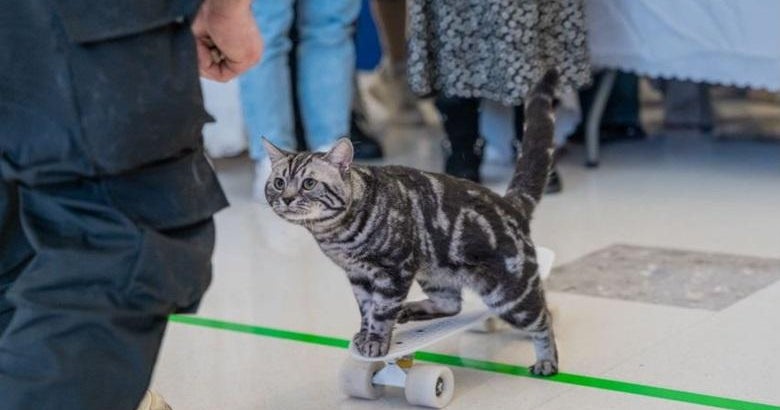Artist John McLaughlin’s long-overdue show
Now showing at a major museum: paintings by the influential 20th century artist John McLaughlin. You say you’re not familiar with his work? Neither was our Ben Tracy:
In the world of abstract expressionism there are certain names that come to mind: Pollock. Rothko. de Kooning. But a new exhibit wants to add another name to that list.
As to why post-war artist John McLaughlin is worthy of a retrospective, curator Stephanie Barron said, “There’s a resurgence of interest in going back to the ‘50s, ‘60s and ‘70s, and finding those artists who may not have been the ones who were the bold-faced names the first time around. But these are artists who perhaps more quietly and perhaps with less economic success continued to create a really powerful body of work.”
Barron is curator of an exhibit at the Los Angeles County Museum of Art featuring the work of McLaughlin.
He was relatively unknown partially because he lived in southern California, not New York City, the epicenter of modern art in the mid 20th century.
He was also a bit of a late bloomer; he didn’t start painting until he was nearly 50 years old. He bought his canvases at Sears, and he used house paint. “He didn’t go to art school, he didn’t apprentice with other artists. I mean, these were all traditional ways that artists became artists,” said Barron.
McLaughlin was born in 1898 outside of Boston. He adopted his mother’s fondness for Japanese art, and would spend several years abroad in Asia, collecting art and learning Japanese and Mandarin. He later served there as an Army translator during World War II.
McLaughlin’s artistic choices were inspired by the Japanese idea of ma, meaning the void or space between -- a unique approach at the time.
When asked to explain the Japanese influences in McLaughlin’s paintings, Barron said, “He is giving a weight to spaces in-between -- not so much the foreground or the background, but rather the foreground becomes the background.”
Christopher Knight, chief art critic at the Los Angeles Times, said, “I would stack him up against any American artist of the 20th century.
“He breaks every rule you can think of in terms of good, acceptable composition for a painting. He splits his paintings in half. Who does that?”
Knight said McLaughlin’s use of the void as a place for peaceful contemplation separates him from his contemporaries.
“In the ‘50s in New York, coming after World War II, the void was a very different concept for Jackson Pollock and Mark Rothko,” Knight said. “The void was a place of terror; the world had almost collapsed after the Holocaust and the hydrogen bomb. And that’s, in some respects, almost the opposite of what McLaughlin was doing -- the void as a place in which consciousness and perception can emerge.”
McLaughlin died in 1976 just as his reputation was building. He had no children, so his paintings were eventually sold off.
The Los Angeles County Museum of Art exhibit is set to close next month. But Knight hopes it fills the void of appreciation he feels the artist truly deserves.
“When you have an artist of McLaughlin’s brilliance, it behooves you to pay attention to him if you have any interest in art whatsoever,” he said. “And here is this largely unknown jewel, in a fantastic exhibition, sort of perfectly organized, waiting for you to go see it. Why not?”
For more info:
- John McLaughlin Paintings: Total Abstraction, at Los Angeles County Museum of Art (through April 16, 2017)
- Exhibition Catalogue: “John McLaughlin Paintings: Total Abstraction”
- Christopher Knight, Los Angeles Times






